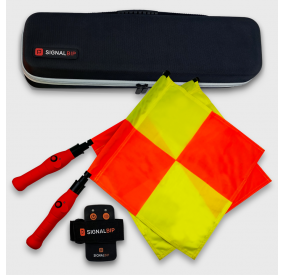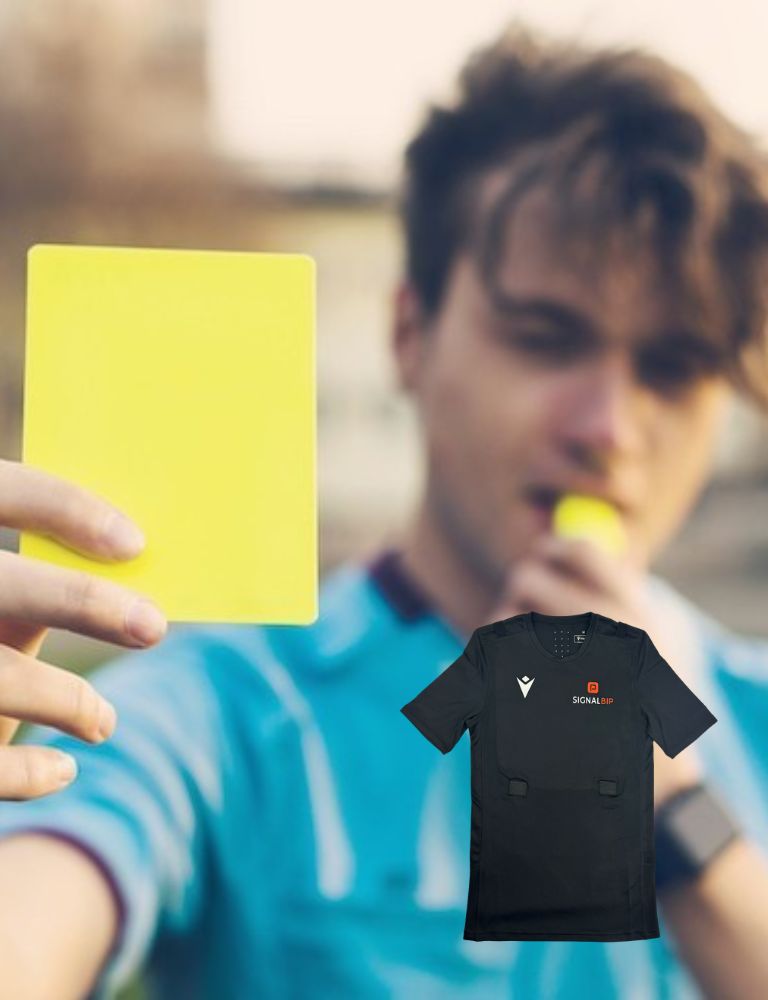


Offer valid from october 1st to december 31st, 2025

Perfect for slipping in your flag kit receiver, audio communication module, GPS... avoiding multiple armbands!!

Offer valid from October 1st to December 31st, 2025

Perfect for slipping in your flag kit receiver, audio communication module, GPS... avoiding multiple armbands!!
Thanks to electronic referee flags and professional Bluetooth earpieces, refereeing becomes even more efficient.

Credibility is enhanced because reported fouls are immediately communicated to the main referee, fouls are less debatable thanks to smoother communication on the field.

There are fewer unnecessary play interruptions thanks to the two-way communication between the main referee and the assistant referees.

They allow the main referees to avoid missing any action or error and to be alerted when a mistake is detected by an assistant referees (formerly also called touch judges or linesmen).
We can safely say that advances in science and technology have transformed our lives. Refereeing has not been immune to these major developments — in fact, sport referees have benefited greatly from them. With the introduction of the electronic touch flag, the days when a referee could miss a foul signaled by one of his assistants are now behind us. Electronic referee flag kits have simplified communication between assistant referees (formerly touch referees) and the central referee, making gameplay on the field smoother and more efficient. They were first used in official competitions during the soccer matches at the Atlanta Olympic Games in 1996, and have continued to evolve ever since thanks to feedback from referees. The electronic system allows the assistant referee to alert the central referee when he raises his flag and presses the button. The central referee then receives an audible/or vibrating signal on a receiver worn on his arm, and can determine which of his assistants warns him with different signals. See also our range of professional Bluetooth headsets.
In recent years, refereeing has undergone significant changes. The rise of violence in stadiums and sporting events in general and technological advancements in the field have had a strong impact on the sports sector. As a result, the referee may, rightly or wrongly, be pointed out as "responsible" for a sanction when his role is to ensure that the rules of the game are respected and not to penalize players without reason.
The pressure on referees is increasing and the main referee must ensure that irregularities in the game are identified promptly. Communication between the main referee and the assistant referees must be flawless and instantaneous. With the noise of the fans and the fast pace of the action, this is not always easy, and the development of audio and television technology has made every refereeing decision even more challenging.
The electronic touch flag is primarily useful for assisting the central referee in making decisions. It is particularly useful in offside situations, when a foul is out of the referee's field of vision, but also when decisions can be tricky.
For example, if an assistant referee spots a foul, he first looks at the central referee to see if he has made a decision. They first check whether the central referee has made a decision. If not, they can alert the referee by raising the flag and pressing the electronic button, which sends a beep and/or vibration to the main referee.
Electronic flags are designed for several sports referees such as Football, Rugby or even Handball. They are frequently used at major international matches and also the Olympic Games. They are designed for a team of 3 referees: 1 central referee and 2 assistants, or 4 referees: 1 central referee, 2 assistants and a substitute referee (known as the fourth referee), or 6 referees: 1 central referee, 2 assistants, a substitute referee and 2 additional assistants (known as the surface referee).
SignalBip rechargeable electronic sideline flags allow assistant referees to notify the central referee of fouls with a simple touch. An audible or vibrating alert is then sent on the central referee's receiver, ensuring that he or she no longer misses any important information.
The vibration or sound (depending on the mode selected) can even indicates which assistant referee sent the alert. Electronic referee flags leave no room for doubt and make refereeing more efficient. Referees equipped with SignalBip electronic flags are more reactive and more serene.








